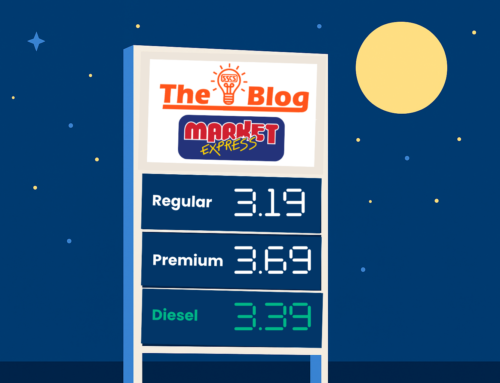
“Let’s Go Down to the Standard”
When you do business in a recreational paradise and your customer base grows by 600 percent in the summer, you have to be flexible, without forgetting the locals.
The state of Minnesota’s tagline, “Land of 10,000 Lakes,“ isn’t quite accurate; indeed, it’s an understatement.
Depending upon the source, the number is cited as anywhere from 11,842 (Minnesota Public Radio), to 17,246 (University of Minnesota Duluth). And those lakes can scatter for miles with only a few small cities and towns to intrude. It’s almost like you’ve landed on another planet, saturated with beautiful blues and greens.
Little wonder then that Minnesota’s lake territory is a favorite of sportspeople. In winter, when the freeze turns lake surfaces solid, the recreations of choice are ice fishing, snowmobiling, cross-country skiing, snowshoeing, and ice skating.
However, it’s in summer that the action really starts. After the long northern winters, visitors come from far and wide to enjoy the combination of warm weather, cool water, and miles of shoreline. Favorite pastimes include swimming, boating, fishing, kayaking, paddleboarding, and water skiing. There’s plenty of hiking and biking, camping, and nature walks, too.
Retailers in the towns that dot these lakes must be prepared to accommodate this yearly influx, while at the same time addressing the needs of full time residents, for whom another outlet may be dozens of miles away. This is exactly the skill that SSCS customer, Battle Lake Standard, has demonstrated for 40 years. It’s no mean feat, as the town of Battle Lake, population 850 in the offseason, swells up to about 5,000 in the peak summer season.
There’s no substitute for being familiar with the ebb and flow of the market, and Dale and Pam Cameron, who originally bought the business in 1984, understand theirs like few others. More than that, they have become part of the fabric of Battle Lake, and have remained that way for 40 years, even as they have consistently expanded. For example the added fuel wholesaling in 1991, a vital service, since access to fuel distribution networks is limited in such an isolated area, which can be critical for travelers and businesses when the weather turns severe.
In 1993, the Camerons moved to their current location on the highly visible intersection of highways 210 and 78, a Ford dealership that the Camerons completely renovated, which included turning the automobile showroom into a c-store.
“We’ve always been involved in our town, “Dale notes, ”and a lot of that work has been with kids, training them on heavy equipment, for example, as well as hands-on training and safety instruction with other tools. That means we have a lot of customers that grew up in our store, basically. It’s pretty common around here to hear folks say, ‘Let’s go down to the Standard’ and everyone knows what it means. We’re part of the community. That’s one of the best things about the job.”
Realizing that locals rely on their operation, more than most, the Camerons carry inventory that you won’t find in a more crowded metropolitan area, such as a full range of power equipment. They also perform small engine and auto repair.
A diversified product mix, together with sales growth and physical expansion has been a challenge for the Camerons. Even more so when you realize that they handled the back office part of it successfully for years with only an accounting software package. That speaks to their sound business practices and disciplined management of the numbers.
But evolving businesses and evolving markets require operators to adapt, and because they are successful, the Camerons did exactly that. Not only would they look into back office technology, they would enlist the next generation of Camerons into the business to maintain its vitality. The impact of both has been significant, as we shall see next week in Part 2.






Leave A Comment